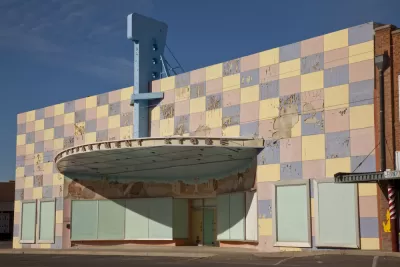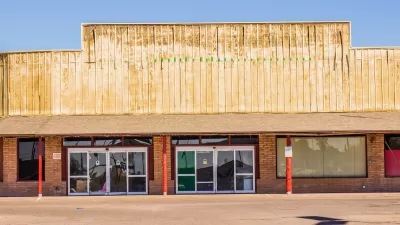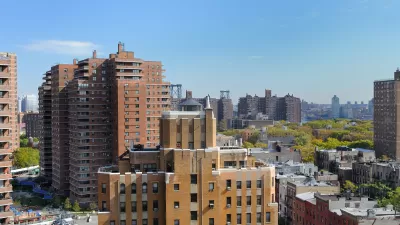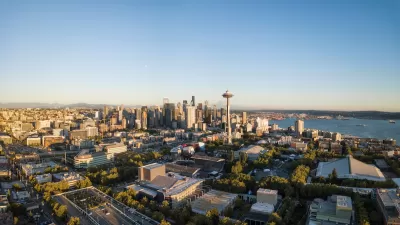The Phoenix City Council has taken the first steps toward zoning reforms that can balance out the oversupply of retail spaces at one end of the market and the lack of housing units at the other.

Jessica Boehm reports that Phoenix city officials are attempting to kill two land use birds with one stone by making it easier to covert vacant storefronts into housing.
"Phoenix has a lot of retail space — an average of 40.5 square feet of retail per capita, compared to 28 square feet nationwide," writes Boehm for context on the retail context. Like many cities, retail struggled in the years leading up to the pandemic, and major retailers like Sears and Toys "R" Us have vacated their physical stores. The pandemic added additional disruption.
On the flip side is the city's housing market, which, according to a recent study [paywall], is short 163,067 units. While the article allows some debate about whether there is an unhealthy amount of retail vacancies in the city, the housing supply shortage is never questioned.
As explained by Boehm, the effort was still in the brainstorming stages at an October council meeting, and the idea of providing incentives to convert retail spaces onto residential units is only one of numerous ideas currently on the table. According to Boehm, other ideas for easing pain at both ends of the real estate market include increasing the height and density for residential development, allowing some uses requiring special permits (e.g., tattoo shops, massage therapy, and self storage facilities, as well as microbreweries, distilleries, and data centers) to operate in commercial zones, and reducing minimum parking requirements.
The source article also details some of the redevelopment projects already converting underutilized commercial parcels in the city—even without zoning changes.
FULL STORY: Could replacing vacant storefronts with housing help Phoenix's severe housing shortage?

Planetizen Federal Action Tracker
A weekly monitor of how Trump’s orders and actions are impacting planners and planning in America.

San Francisco's School District Spent $105M To Build Affordable Housing for Teachers — And That's Just the Beginning
SFUSD joins a growing list of school districts using their land holdings to address housing affordability challenges faced by their own employees.

The Tiny, Adorable $7,000 Car Turning Japan Onto EVs
The single seat Mibot charges from a regular plug as quickly as an iPad, and is about half the price of an average EV.

Seattle's Plan for Adopting Driverless Cars
Equity, safety, accessibility and affordability are front of mind as the city prepares for robotaxis and other autonomous vehicles.

As Trump Phases Out FEMA, Is It Time to Flee the Floodplains?
With less federal funding available for disaster relief efforts, the need to relocate at-risk communities is more urgent than ever.

With Protected Lanes, 460% More People Commute by Bike
For those needing more ammo, more data proving what we already knew is here.
Urban Design for Planners 1: Software Tools
This six-course series explores essential urban design concepts using open source software and equips planners with the tools they need to participate fully in the urban design process.
Planning for Universal Design
Learn the tools for implementing Universal Design in planning regulations.
Smith Gee Studio
City of Charlotte
City of Camden Redevelopment Agency
City of Astoria
Transportation Research & Education Center (TREC) at Portland State University
US High Speed Rail Association
City of Camden Redevelopment Agency
Municipality of Princeton (NJ)





























